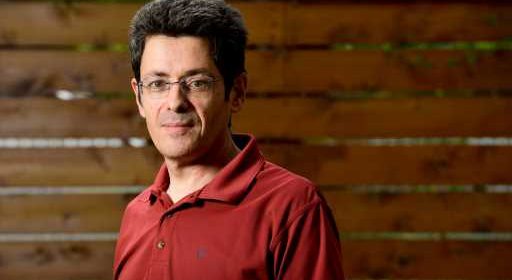Coronavirus is airborne, data from CU researchers show – The Denver Post

People can contract coronavirus through the air even while wearing masks and social distancing, according to data and research by a group of University of Colorado Boulder professors.
Professor Jose-Luis Jimenez created a tool to estimate airborne transmission of COVID-19 in different settings, and he and a group of CU Boulder faculty were among 239 scientists who signed a letter asking the World Health Organization to recognize that the virus can be transmitted through the air.
WHO released a scientific brief Thursday that discussed the possibility of airborne transmission, but held the line that the main form of transmission is through droplets that people spread when they cough or sneeze.
Jimenez and his colleagues have been asking WHO to recognize airborne transmission for four months, which gained traction in a letter published Monday.
“There is significant potential for inhalation exposure to viruses in microscopic respiratory droplets … at short to medium distances (up to several meters, or room scale), and we are advocating for the use of preventive measures to mitigate this route of airborne transmission,” according to the letter cosigned by Jimenez, Professor Shelly Miller and four other professors.
Early efforts to study airborne transmission involved 36 scientists exchanging nearly 50 emails a day, Jimenez said.
That collaboration led Jimenez to develop a model to estimate the probability of contracting coronavirus through the air in specific scenarios if people are already taking precautions like social distancing and wearing masks.
The model accounts for the size of a room, the number of people and their breathing rates, the amount of time spent in the room, how many people have COVID-19, room ventilation, efficacy of masks and how much of the virus people are likely to breathe out and breathe in.
For example, if an instructor has coronavirus and is teaching a class, they are more likely to transmit the disease than a student because they’re talking more frequently and loudly than students.
Jimenez’s model estimates that with social distancing and mask-wearing, there’s a 4% chance that an instructor would spread the virus to someone else in the classroom. If it’s just one student who is sick, there’s a .5% chance they could spread it.
Jimenez’s model is adjustable and includes scenarios for an entire university campus, a bus, a subway car and the outdoors. He also used data from an outbreak at a choir practice in Skagit County, Wash., to show that even if social distancing is maintained, not wearing a masks, being indoors with little ventilation and staying somewhere for a long time causes infection rates to skyrocket.
With one sick person, social distance, no masks and singing, the probability of infection increased to 83%.
Miller’s research into the Skagit County outbreak shows that air flow and spending less time inside could result in a lower risk of infection.
“We need as much outside air as possible,” Miller said in a statement. “If you have to recirculate air, then use the highest-rated filter that you can.”
On a college campus of 33,000 students — roughly the size of CU Boulder — with reduced in-person teaching and social distancing policies in place, Jimenez’s model estimates 583 students and 2 instructors will contract coronavirus. Jimenez modeled the probability of transmission on a campus of that size by scaling up the classroom scenario.
Jimenez said his model is still being updated, but that it points to the importance of wearing masks, maintaining social distance and reducing time indoors with groups of people, low ventilation and singing or shouting. All of those factors influence how much virus will be in the air, the probability it will be there and the probability of breathing it in, Jimenez said.
“We have a difficult fall and winter in front of us so it behooves us to take these models seriously so we can reduce the virus,” Jimenez said. “The model is really dependent on how many people have the virus. We need to collectively reduce the number of cases so we can make it safer for everybody.”
Jimenez’s model can be viewed and downloaded at tinyurl.com/covid-estimator.
Subscribe to bi-weekly newsletter to get health news sent straight to your inbox.
Source: Read Full Article